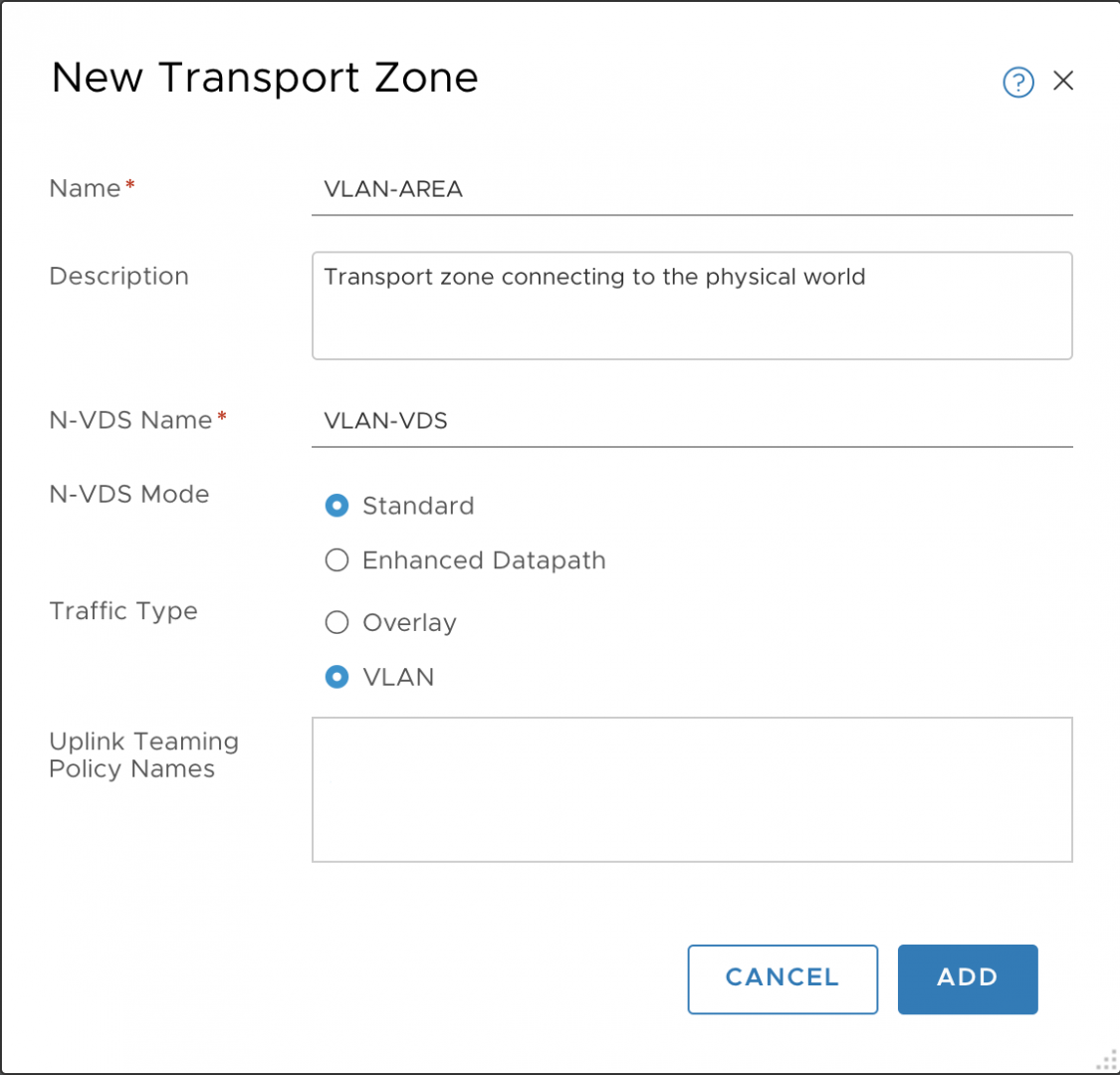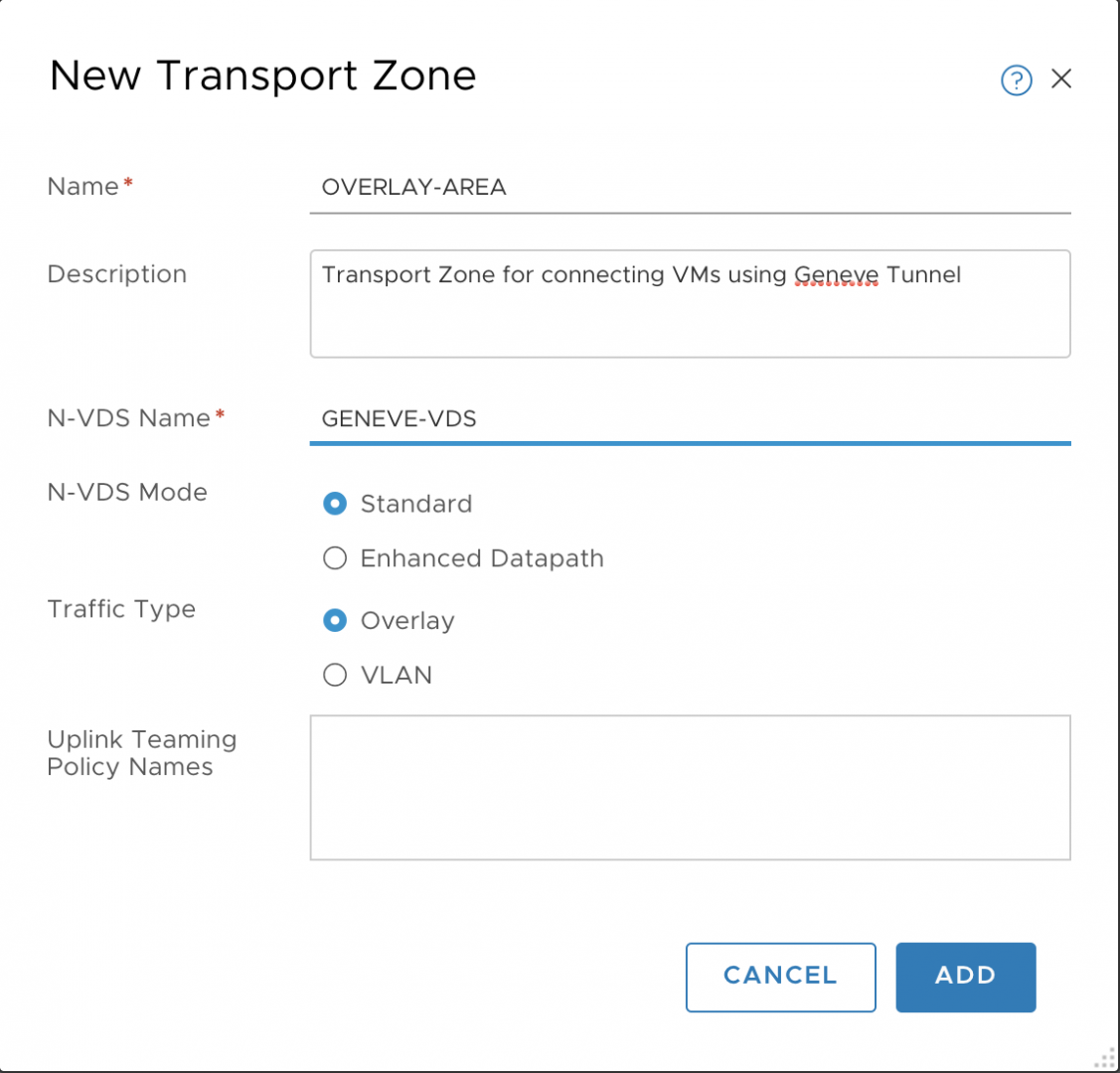This article will explain how to create a transport zone on NSX-T 2.3.
What’s is it ?
First we need to know what is a transport zone ?
A transport zone is an object where transport nodes (ESXi Host, KVM hosts) can have virtual machines communicate with each other through logical switches.
There are two types of transport zone :
- VLAN Transport zone make it possible to communicate with the physical or external world by using vlan logical switch. In a full NSX-T design only the NSX-Edge should be connected to the VLAN transport zone
- Overlay Transport zone define a perimeter where hosts and NSX-Edges are the boundaries, an overlay transport zone use an encapsulation method (GENEVE).
A Transport Zone is associated to an N-VDS (NSX-T Virtual Distributed Switch)
On KVM, Openvswitch create an N-VDS, ESXi host use vmware proprietary distributed vswitch.
There are two modes available on Transport Node (Standard and Enhanced).
In standard mode you can only have one overlay transport zone attached to your hosts (ESXi, KVM).
In enhanced mode you can have multiple overlay zone on ESXi but not on KVM.
Configure a Transport Zone
OK let’s configure two standards transport zone: Overlay and VLAN.
First, you need to create an Uplink Profile and an IP Pool.
Secondly, you should create an Network IO Control profile in my article we will use the default one provided by NSX.
Login to your NSX-T manager, on the left pane: select “Fabric”, “Transport Zone” and click “+ ADD”
We have our transports zone VLAN-AREA associated with the NSX-T Distributed vSwitch VLAN-VDS and OVERLAY-AREA associated with GENEVE-VDS.
We don’t need to configure the Uplink Teaming policy. Actually the uplink profile already contains it and we will apply later.
See Add Ubuntu KVM host to NSX-T to be able to attach your host to a transport zone
Seet the vmware documentation about NSX-T: https://docs.vmware.com/fr/VMware-NSX-T-Data-Center/index.html
See the vmware explaination about enhanced datapath: https://docs.vmware.com/en/VMware-NSX-T-Data-Center/2.3/com.vmware.nsxt.install.doc/GUID-F459E3E4-F5F2-4032-A723-07D4051EFF8D.html
That’s it !, i hope you found something useful.

